Last Updated on April 23, 2023
Did you know the Lhasa Apso dog was originally called the Abso Seng Kye, the “Bark Lion Sentinel Dog?”
This Beard Lion Dog has a fascinating history with a fierce and independent side to it. Lhasas are a wonderful breed to bring home, but they might not be right for every family. Let’s learn more about the Lhasa Apso!
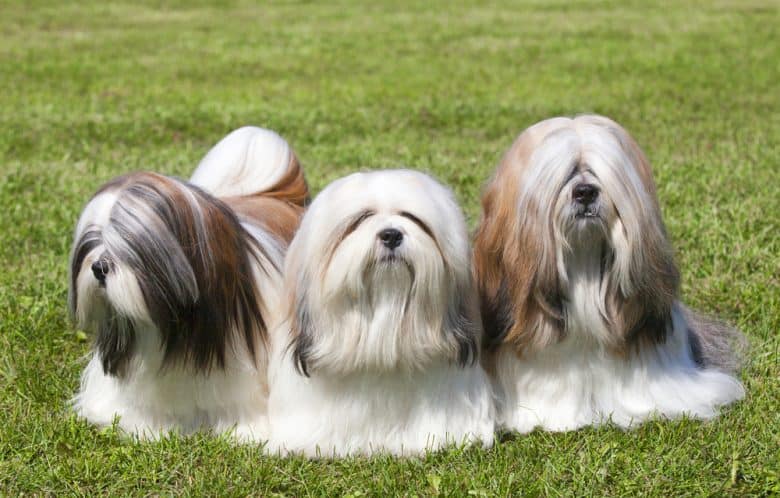
Quick Navigation
- 1 Where did the Lhasa Apso dog originate?
- 2 Appearance: how do I know if my dog is a Lhasa Apso?
- 3 Personality: is a Lhasa Apso, a good family dog?
- 4 How to care for your Lhasa Apso
- 5 What health problems do Lhasa Apsos have?
- 6 Lhasa Apso Price: How much does a puppy cost?
- 7 Curious about Lhasa Apso mixes?
- 8 Who should get a Lhasa Apso dog?
- 9 Further reading: similar breeds to the Lhasa Apso
Where did the Lhasa Apso dog originate?
Record says this dog breed goes way back to 800 B.C. Initially bred in Tibet in the Himalayan Mountains, Lhasas were a sacred, royal watchdog.
These little dogs guarded temples and Buddhist monasteries from inside while bigger Mastiffs guarded the outside.
The Lhasa Apso was a popular breed and considered sacred and believed to bring good fortune to their owners.
Before they got the name they have today, Lhasa Terrier was changed since this pooch was believed to be in the Terrier group.
Named after a sacred city, Tibet’s capital, Lhasa, it’s unsure where exactly Apso came from.
It’s believed it might be a misspelling of the original name of the dog breed, Abso Seng Kye, or it might derive from the Tibetan word for goat, rapso, due to their coat type.
These small dogs came to be from the Tibetan Terrier and similar Tibetan dogs in the herding group.
Lhasa Apsos were not bought but often given as gifts. A traveler named C. Suydam Cutting visited Tibet in the 1930s, where they were gifted a Lhasa Apso from the 13th Dalai Lama.
They then brought the breed over to the United States in the late 1940s.
You might know this dog breed from a few pop culture references, such as the animated TV show, Spider-Man, and His Amazing Friends, where Angelica Jones has a Lhasa named Ms. Lion.
This doggo is also a main character and plot device in Louise Rankin’s book, Daughter of the Mountains.
Actress and songwriter Keke Palmer also have a Lhasa Apso pup named Rust.
The American Kennel Club (AKC) recognized this breed in the non-sporting group in 1935.
Appearance: how do I know if my dog is a Lhasa Apso?
This ancient breed may look like another, so how can you tell if your Lhasa Apso is purebred? According to the breed standard, Lhasa Apsos are small, sturdy, and well-balanced.
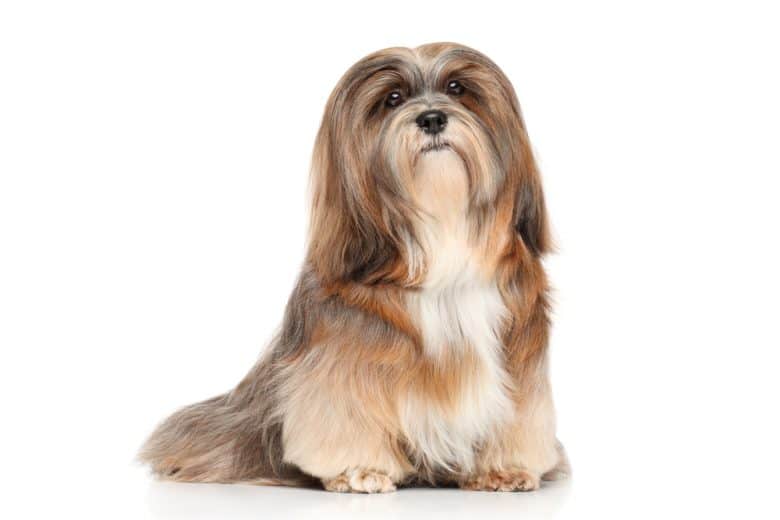
This pooch has an alert and intelligent expression upon its face with a good beard and whiskers. The skull is narrow with a straight muzzle.
They have almond-shaped, brown eyes, a black nose, and their ears sit slightly above their eye level.
The neck blends smoothly into the shoulder blades with a rectangular body with a chest that’s a good depth.
Their topline is level from the withers to the croup, with their tail being well-feathered and set high. The tail is carried on the back, curled over to the side.
As for their forequarters, the Lhasa Apso has well laid-back shoulders, with their blades and upper arms equal in length. The front legs are hairy with round, cat-like feet.
The hindquarters are balanced with the forequarters. The hind legs also are hairy, and the paws match the front ones.
Size: How big do Lhasa Apsos get?
Male Lhasa Apsos grow about 10 to 11 inches (25 to 28 cm), with females being slightly smaller.
Both genders will weigh to be about 12 to 18 pounds (5 to 8 kg).
Your Lhasa pooch will be fully grown between 9 and 12 months of age, but it can sometimes take them as long as 18 months.
Given their small size, the Lhasa Apso dog will do well in an apartment.
Coat: what type of coat does the Lhasa Apso have?
Originating from the Himalayas, this dog breed has a double coat to protect them from different weather.
The coat is heavy, straight, and dense. It’s a long length that’s parted down the middle and does not feel woolly or silky.
These little dogs can come in various coat colors, such as black, black and tan, blue, charcoal, cream, golden, grizzle, gray, liver, red, red gold, silver, and white.
This doggo doesn’t just come in solid colors, however. They can also have coat markings such as a black mask with tips, black tips, brindle, parti-color, sable, white markings, and sable white markings.
Lhasa Apso vs. Shih Tzu
These two dog breeds look similar to one another, that it might be hard to tell the difference between the two of them.
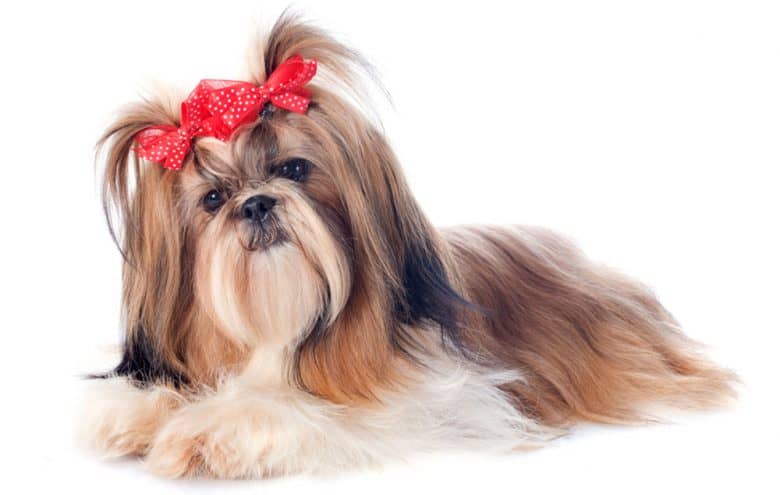
The Lhasa Apso was sent to China to help develop the Shih Tzu and other breeds such as the Pekingese.
One difference is that they’re both part of different groups. The Shih Tzu is in the toy group, while the Lhasa Apso is part of the non-sporting group.
These two dog breeds also have different coats. The Shih Tzu has a flowing coat that’s not heavy and straight.
We can’t forget about their different personalities, either. The Shih Tzu is friendly and outgoing as they were bred to be companion dogs.
On the other hand, Lhasas were initially bred to be sentinel dogs. Let’s take a closer look at their personality.
Personality: is a Lhasa Apso, a good family dog?
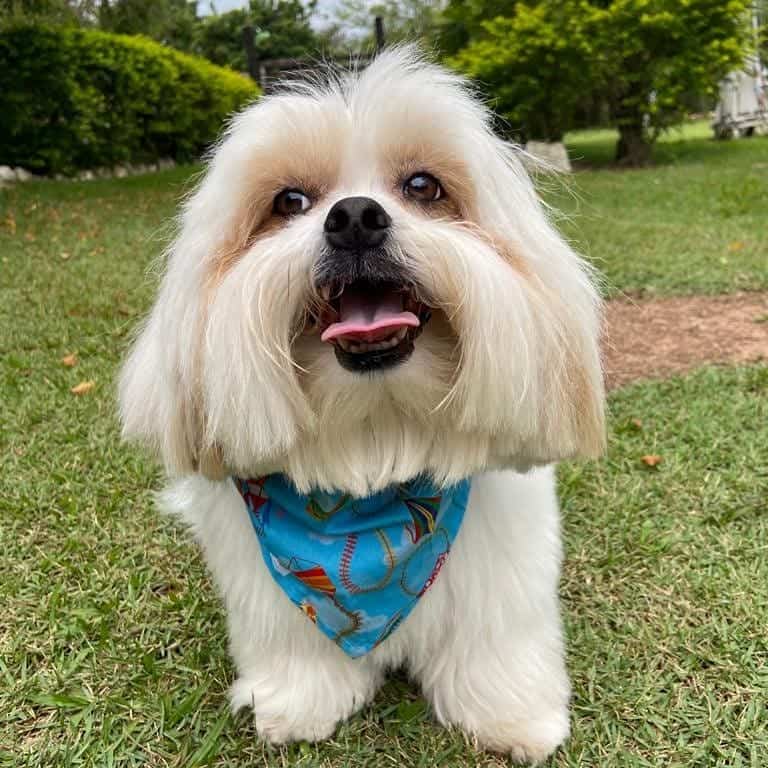
This ancient breed, known for being a watchdog, will make a good family dog, but it will take some time for them to get used to the family.
They will be affectionate and want to cuddle with their owners. In fact, they’ll be content to be a lapdog and hang out with you on the couch.
This dog breed can be good with kids as long as they’re trained and socialized super early. They will most likely do better in a family that’s only adults or has older children.
However, the Lhasa Apso can be a friendly breed, but it will take them some time to warm up to others.
Believe it or not, despite them being wary around others, the Lhasa Apso is not aggressive.
While they believe they’re bigger than they are, they’re not dangerous due to their size. Without proper training, this small dog may tend to nip.
When meeting new people and animals, such as strangers, other dogs, other pets, and cats, your Lhasa Apso will be wary. They’ll feel the need to be alert and protect you just in case something goes wrong.
If you have other animals at home and want your Lhasa to get along well with your friends, early socialization is necessary.
Luckily, this doggo can be left alone. They’ll prefer to be with you, but they won’t get separation anxiety if left home alone for longer periods.
Given their independence, they’ll be okay with some quiet time.
The Lhasa Apso will bark a lot, however. They are always in “watchdog” mode and alert you if they feel something is off or think something is wrong.
With that said, this pooch is smart. They will attempt to be the “leader” of the family without a firm owner to tell them otherwise.
This dog breed is prone to “Small Dog Syndrome,” which is why early training and socialization are key. Crate training is highly recommended.
It’s not difficult to train your Lhasa Apso, but you’ll need to be patient, firm, and consistent with your pup. If they begin any negative behavior or try to be the “leader,” then you’ll need to nip that in the bud.
When it comes to discipline, stay sensitive as the Lhasa Apso doesn’t respond well to discipline. Reward good behavior when you can.
The same goes for potty training, as well. Due to their independence, housebreaking will be a challenge, but it’s manageable with positive praise and rewards.
How to care for your Lhasa Apso
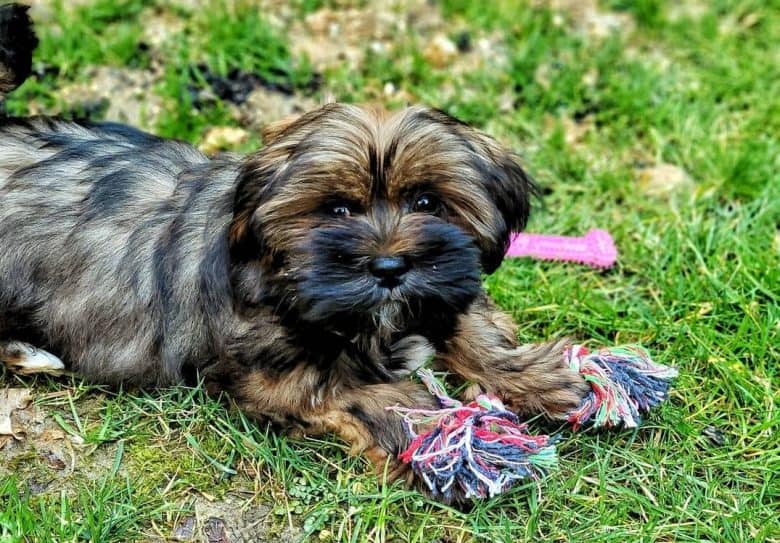
When it comes to taking care of your doggo, the Lhasa Apso isn’t too high in maintenance, given their personality and grooming needs.
While this small dog shouldn’t be left outside, their double coat is built to protect them from cold weather, unlike a dog with a short coat, such as a Greyhound.
However, the Lhasa Apso cannot tolerate the heat. In the warmer months, you need to be wary that they’re not overheating.
Exercising your Lhasa Apso
This dog breed has moderate energy levels. They love to romp and play either indoors or outside, but they’ll only need about 20 minutes of exercise per day.
A brisk walk each day or having some time together in a fenced-in yard will help them get out some of that energy from the day.
Even a dog park trip for play sessions with friends will help them get exercise and get socialized with other humans and dogs.
Due to the Lhasas watchdog background, they’ll need just as much mental stimulation as physical exercise.
They’ll enjoy activities such as agility, scent work, retrieving, and herding.
Grooming: do Lhasa Apsos shed?
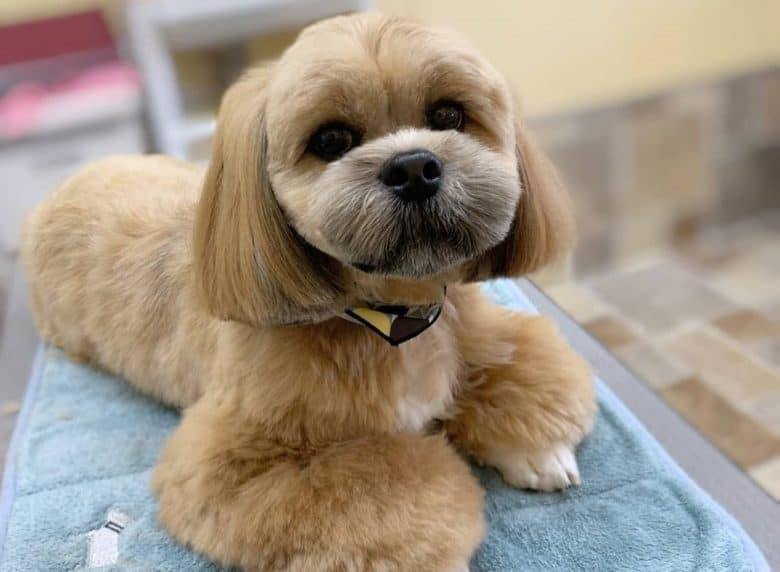
If you have allergies in your family or you’re looking for a low-shedding pup, then you’re in luck. The Lhasa Apso doesn’t shed much and is a hypoallergenic dog.
Despite the long coat some of these doggos have, grooming is easy. Because they don’t shed much, daily brushing and combing aren’t required.
However, it’s always a good idea to keep up with the brushing to ensure their coat doesn’t get snarls and tangles. A pin brush and comb will work fine.
While you can shave your Lhasa Apso, it’s not recommended. It will ruin the double coat that protects them from various weather.
Your pooch’s coat will be fully grown in when they’re about 9 to 12 months old.
You can always take your Lhasa to a professional groomer as they’ll know exactly what to do with your pup’s coat.
If you do not take your pup to a groomer, then be sure to bathe them at least once every two weeks.
If they go to regular grooming appointments, then bathing your doggo once in between each grooming visit is fine.
Unless your pup has an infection, Lhasa Apsos do not smell.
In addition to regular brushing and the occasional bath, you’ll want to trim your Lhasa’s nails regularly, along with brushing their teeth and checking their ears for infection.
Feeding: How much food should a Lhasa Apso consume in a day?
These little dogs need high-quality dog food with good protein and fat.
The Lhasa puppy from 8 to 12 weeks old will need to eat at least three to four meals per day.
Lhasa Apso adults that are six months or older will need to eat about ¾ to 1 cup of food per day split into two meals.
Be sure to talk with your vet about the right dietary needs for your pooch. No matter how much they beg, do not feed your Lhasa pup human food, table scraps, or anything toxic to dogs.
What health problems do Lhasa Apsos have?
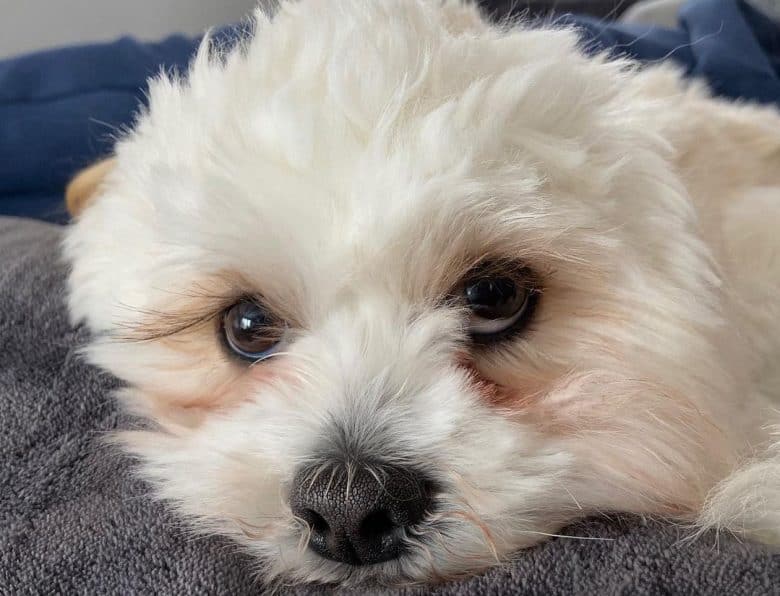
This sentinel dog, though they act high and mighty, does have some health issues that could occur to them.
For one, the Lhasa can have a few eye problems such as Dry Eye or Keratoconjunctivitis Sicca, Progressive Retinal Atrophy (PRA), or Cherry Eye.
This doggo could also get Hereditary Kidney Dysfunction, Slipping Stifles, Hip Dysplasia, Patellar Luxation, Sebaceous Adenitis (SA), Familial Inherited Renal Dysplasia, Bleeding Ulcers, or Allergies.
Other health conditions might be Elbow Dysplasia, Hypothyroidism, von Willebrand’s Disease, or Thrombopathia.
Luckily, there are various screenings you can do for your dog to keep an eye on these issues and ensure they don’t happen to your pooch.
These health tests could be the Orthopedic Foundation for Animals (OFA) for Hip Dysplasia, Elbow Dysplasia, Hypothyroidism, and von Willebrand’s Disease.
Auburn University screens for Thrombopathia, and you could also go through the Canine Eye Registry Foundation (CERF).
The Lhasa Apso has a lifespan of 12 to 15 years. While cancer is the leading cause of death for this dog breed, regular visits to the vet will keep your doggo in tip-top health.
In fact, the oldest Lhasa Apso dog lived to be 29-years-old!
Lhasa Apso Price: How much does a puppy cost?

Despite this breed’s small size, the average litter size for Lhasas is four to six puppies.
The cost of your puppy will depend on where you buy them. For example, you won’t be finding purebred Lhasas in pet stores but through reputable breeders or rescue groups.
The cost for a Lhasa Apso puppy is between $500 and $1,240, with an average of $950.
For the first year, you have your pooch, expect to spend about $2,685.
This includes your new furry friend and anything other essentials you’ll need, such as dog food, toys, grooming supplies, training sessions, vet and medical bills, a crate, dog bed, and more.
After that, you can expect to pay about $1,190 per year.
Lhasa Apso breeders
When searching for a reputable breeder, you’ll want to get to know the breeder first.
Be sure they have a vast knowledge of the dog breed. A good breeder won’t let you take a puppy home before eight weeks of age, and they’ll want to meet you first.
They’ll also let you meet the puppies and the parents of the litter.
An excellent place to start when looking for a breeder is to check out the AKC Marketplace.
You can also take a look at the breed club for this doggo at The American Lhasa Apso Club, where they have a list of breeders by state.
Lhasa Apsos for adoption
Alternatively, you can adopt a Lhasa Apso. Feel free to ask around your local animal shelters to ask if they have any purebred Lhasa Apsos for adoption.
For the United States and Canada, you can start looking through the Lhasa Apso Rescue. Another good place to look is the Lhasa Happy Homes (Santa Monica, CA).
Curious about Lhasa Apso mixes?
The Lhasa Apso purebred is a popular and ancient breed, but that doesn’t mean it can’t be mixed with other dog breeds.
Lhasa Apso Poodle mix (AKA Lhasa Poo)
This hybrid has an average lifespan of 10 to 15 years and will grow to be about 9 to 13 inches (23 to 33 cm) tall and weigh about 10 to 15 pounds (5 to 7 kg). So, it’s close to the same size as the purebred Lhasa.
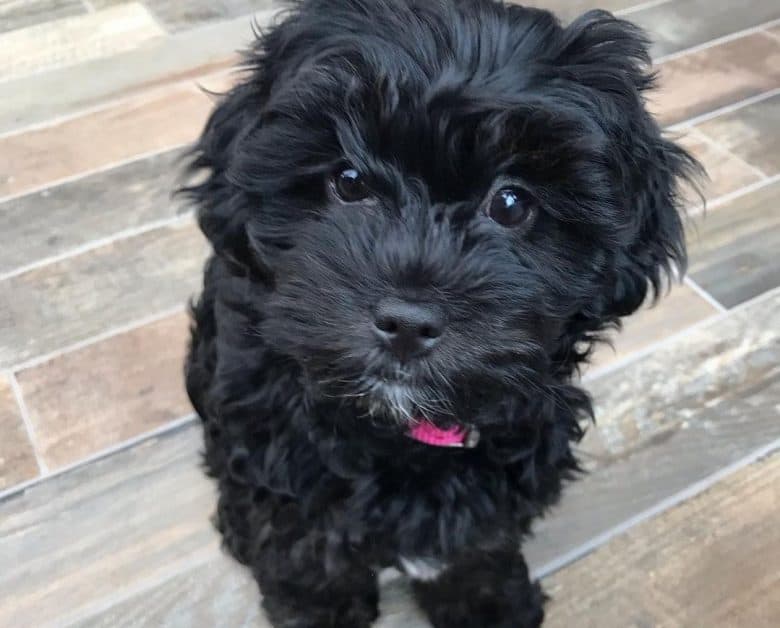
Similar to the Lhasa parent, the Lhasa Poo is protective and will bark at strangers.
However, unlike the Lhasa Apso parent, this mixed breed will get separation anxiety if left alone too long and become destructive.
Overall, the Lhasa Apso Poodle mix is a loyal and playful pup who will fit in with most families.
Lhasa Apso Shih Tzu mix (AKA Lhasa Poo)
This hybrid has an average lifespan of 12 to 15 years. They can grow to be 9 to 12 inches (23 to 30 cm) and weigh 12 to 18 pounds (5 to 8 kg).

The Shih Apso is smart and can be stubborn, so training may prove to be difficult. They may get separation anxiety, but they’ll be affectionate and love to cuddle with you.
This hybrid will make a great protective companion for you and your family.
Don’t miss: Most Popular Lhasa Apso Mixes
Who should get a Lhasa Apso dog?
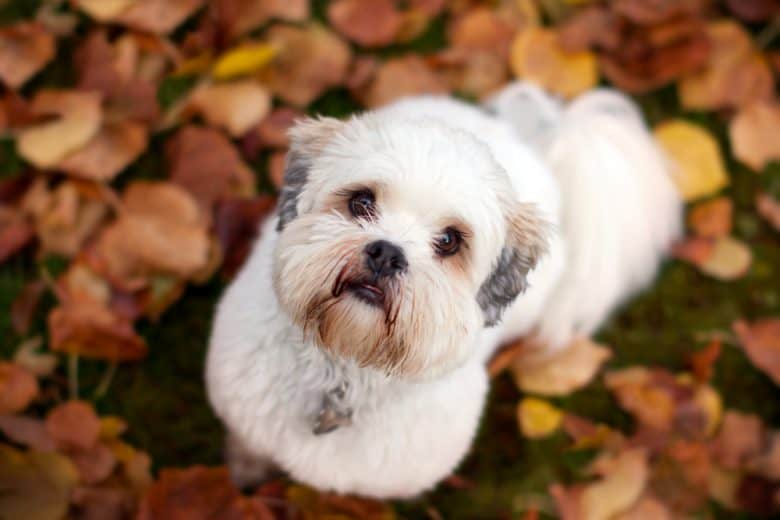
If you’re able to take the time to train and socialize your Lhasa pup as early as possible, then this may be a good dog to add to your household.
While they’ll be okay with kids, they’ll do better with older children but will be great with novice dog owners.
Do you have a Lhasa Apso dog at home? Let us know in the comments!
Further reading: similar breeds to the Lhasa Apso
- Havanese
- Coton de Tulear
Cess is the Head of Content Writing at K9 Web and a passionate dog care expert with over 5 years of experience in the Pet Industry. With a background in animal science, dog training, and behavior consulting, her hands-on experience and extensive knowledge make her a trusted source for dog owners.
When not writing or leading the K9 Web content team, Cess can be found volunteering at local shelters and participating in dog-related events.
